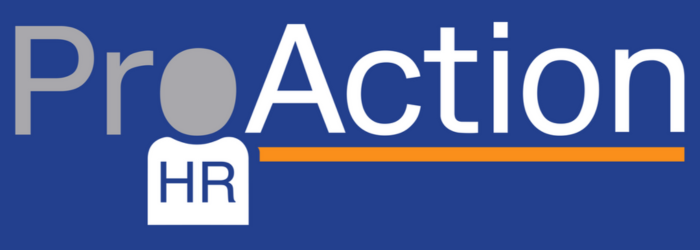HR Trends for 2023 Part 2
This is the second of a two-part annual review of the HR Trends that ProAction HR believe should be on your agenda for 2023.
In a nutshell:
The war for talent will continue for the next few years not months.
With remote working embraced by many, new skills are needed to manage a disparately located workforce.
Staff attrition will increase, so staff retention strategies need to be a priority.
Huge upheaval in the world of work means future change management needs to be collaborative, not prescriptive.
Recruiting and onboarding process and timescales should be fine-tuned to remain competitive.
Compensation, benefits, and company culture must reflect the changing needs and wants of employees.
Offering a positive employee experience is now a necessity, not a ‘nice to have’.
Diversity, equity, and inclusion is front of mind for an increasing number of job seekers.
In part 1 we looked at four emerging trends including candidate shortages, remote & hybrid working, effective leadership and managing change.
With a candidate-driven market likely to be in place for some considerable time, Part 2 explores the other four HR Trends for 2023, which include employee experience, enhanced benefits as a competitive edge, recruitment & onboarding as well as diversity, equity & inclusion.
Employee Experience
In the Gartner Top Priorities for HR Leaders in 2023 report, employee experience was cited by 47% of global respondents as a top priority for 2023. The ongoing war for talent means that positively engaging with your employees and offering a great experience at every touchpoint, must become the norm, not just a token gesture.
Employee retention, culture and employee management can be managed by facilitating an open culture in your organisation, a critical component of offering a positive and inclusive employee experience. Done well this is a key area that you can use to distinguish your organisation, especially if you have embraced remote or hybrid working as a long term business model.
According to Indeed’s Work Wellbeing 2022 Insights Report, 90% of respondents believe that how they feel at work matters, yet only 49% of people report their company is measuring happiness and wellbeing. So, it comes as no surprise that after pay & benefits, the leading reasons people look for new opportunities are stress, lack of satisfaction, and happiness. So measuring and understanding employee wellbeing is becoming vital to both attracting new staff and retaining your current employees.
Indeed’s 2022 research shows expectations at work are increasing following the pandemic with:
46% saying their expectation around happiness at work has increased in just the last year.
86% saying that how they feel at work impacts how they feel at home.
Lastly, stress is being cited increasingly as a key reason for staff attrition.
Glassdoor research shows similar trends, stating that in the UK, workers who are more satisfied with their current jobs are less likely to begin an application for a new job elsewhere. Alongside employee experience, enhanced benefits can also help to mitigate staff attrition, and this is the focus for our next trend.
2. Enhanced benefits as a competitive edge
Compensation remains the top priority for many in the current cost of living crisis. And for job seekers, higher pay was the most selected reason that many start to search for a new job. This is being reflected across wage levels, where there have been substantial wage gains over the last 12 months as employers try to attract and recruit the talent they need.
But what’s the answer if offering higher salaries is not an option? Lower paying roles and sectors where remote working is not an option will have to get creative with what they offer if they want to attract, recruit, and retain new staff.
Holistic benefits have become a more critical part of compensation packages, which give you ways to differentiate your organisation and make job offers more appealing, especially in occupations at the lower end of the wage scale that typically require in-person attendance.
Pre-pandemic, onsite workers in tech companies could expect stocked kitchens and free lunch as standard but now reviews on Glassdoor show that free lunches are on the rise in sectors such as manufacturing and transportation/logistics.
Similarly, access to commuter benefits grew in many of the industries that do not have a remote work option, including free parking, public transportation reimbursement, and even money for fuel. However, perhaps the most critical benefit growing across all industries is that of mental health care, this trend increased throughout 2022 and will continue to gather pace throughout this year too.
Offering a benefits package to suit the needs of today’s workforce is one step towards attracting new employees but with so much competition for talent, your recruitment and onboarding needs to engage them and offer a positive candidate journey to ensure they actually join you.
3. Making your recruitment and onboarding a great experience
In Gartner’s Top Priorities report 46% of HR leaders will be prioritising recruitment with 36% stating their sourcing strategies are now insufficient for finding the skills they need in the current candidate driven market.
Recruitment and onboarding are steeped in opportunities to offer a positive experience to both attract and retain the most suitable people, and this specific element is aligned to the ‘employee experience’ trend we have already covered.
By having a dedicated HR cloud system in place to collate data and identify talent, then attract, recruit, and ultimately retain these individuals is only going to become more relevant in years to come. An end-to-end automated system is becoming a crucial aspect for any business if they wish to remain competitive when it comes to recruiting, onboarding, and retaining staff.
Considering the entire candidate journey as a means of recruiting for any vacancy, let alone those that are tagged as ‘hard to fill’ is a trend that will grow exponentially over the coming months. Having the tech to keep candidates ‘warm’ right from the beginning of the recruitment process until long after onboarding is going to give those who embrace it a huge competitive edge.
Research from Glassdoor states that 89% of job seekers use their mobile for job searching. Having a system to support this mobile application will give more power to your organisation to meet talent requirements, sourcing options and changes in the market.
4. Diversity, equity, and inclusion as a differentiator
One of the emerging job seeker requirements is the importance of any potential new employer to clearly support diversity, equity, and inclusion (DEI), so this is the last trend we explore.
According to the results of a September 2022 Indeed & Glassdoor survey, benefits such as employee resource groups, diversity training, and mentoring programs surged in 2020 and 2021 in the UK as social justice and equity issues came to the fore. Here are just some of the findings:
72% of the 18-24 age group said they would consider turning down a job offer or leaving a company if they did not think the management supported DEI initiatives. This figure lowers as the respondent age increases to 45% aged 65+.
67% of the 18-24 group also said they would consider turning down a job offer or leaving a company if there was a gender imbalance in company leadership, this again reduces as the respondent age increases to just 35% aged 65+.
Its similarly the case when asked if they would consider turning down a job offer or leaving a company if there was a lack of race/ethnicity diversity in company leadership too.
It’s clear that a lack of clearly defined DEI initiatives could have a negative impact on your hiring and staff retention because the workforce of tomorrow will care even more deeply about these than the stats above show. Organisations need to use these DEI programs to continue to differentiate themselves in the candidate driven market we are going to be in for the foreseeable future.
ProAction HR believe these trends show there is a fundamental shift in the workplace and those that shift with it will thrive rather than just survive throughout 2023 and beyond.
Want to read up on the other 4 trends? Then head over to Part 1, where we look in more detail at candidate shortages, hybrid & remote working, effective leadership & management as well as change management.


